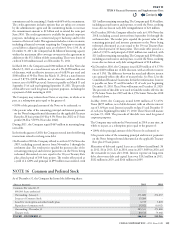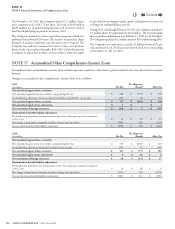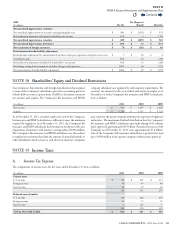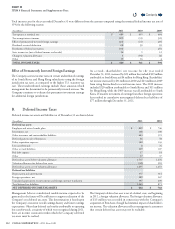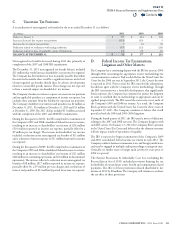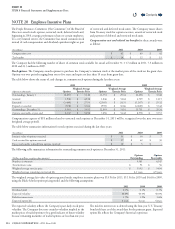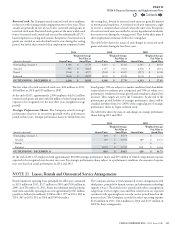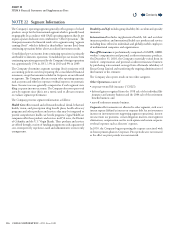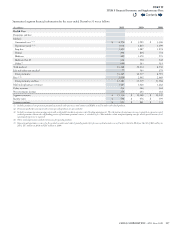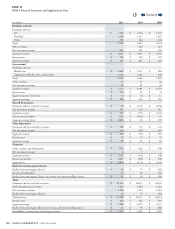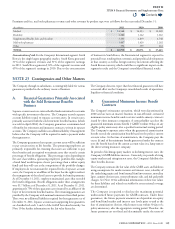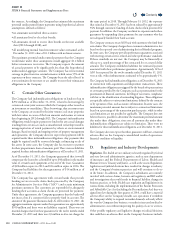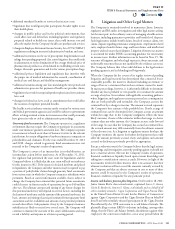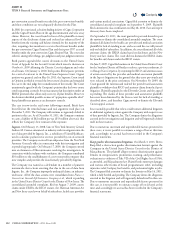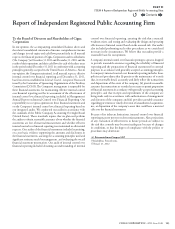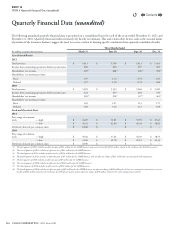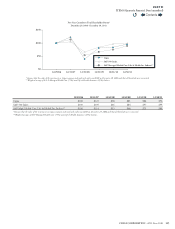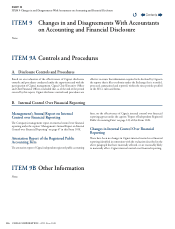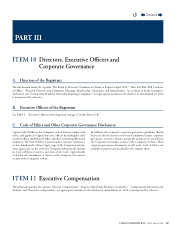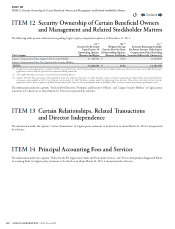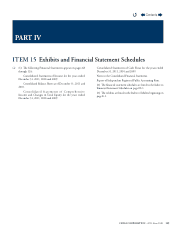Cigna 2011 Annual Report Download - page 141
Download and view the complete annual report
Please find page 141 of the 2011 Cigna annual report below. You can navigate through the pages in the report by either clicking on the pages listed below, or by using the keyword search tool below to find specific information within the annual report.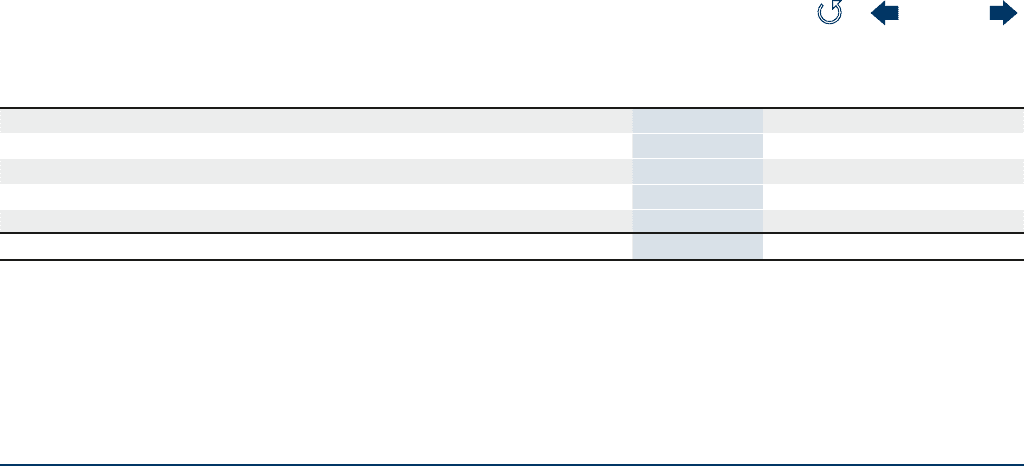
119CIGNA CORPORATION2011 Form10K
PART II
ITEM 8 Financial Statements and Supplementary Data
Premiums and fees, mail order pharmacy revenues and other revenues by product type were as follows for the years ended December31:
(In millions)
2011 2010 2009
Medical $ 14,568 $ 14,253 $ 12,089
Disability 1,280 1,162 1,063
Supplemental Health, Life, and Accident 3,103 2,839 2,748
Mail order pharmacy 1,447 1,420 1,282
Other 392 399 261
TOTAL $ 20,790 $ 20,073 $ 17,443
Concentration of risk. For theCompany’s International segment, South
Korea is the single largest geographic market. South Korea generated
31% of the segment’s revenues and 51% of the segment’s earnings
in 2011. South Korea generated 32% of the segment’s revenues and
49% of the segment’s earnings in 2010. Due to the concentration
of business in South Korea, the International segment is exposed to
potential losses resulting from economic and geopolitical developments
in that country, as well as foreign currency movements aecting the
South Korean currency, which could have a signicant impact on the
segment’s results and the Company’s consolidated nancial results.
NOTE 23 Contingencies and Other Matters
e Company, through its subsidiaries, is contingently liable for various
guarantees provided in the ordinary course of business.
A. Financial Guarantees Primarily Associated
with the Sold Retirement Benefits
Business
Separate account assets are contractholder funds maintained in accounts
with specic investment objectives. e Company records separate
account liabilities equal to separate account assets. In certain cases,
primarily associated with the sold retirement benets business (which
was sold in April2004), the Company guarantees a minimum level
of benets for retirement and insurance contracts, written in separate
accounts. e Company establishes an additional liability if management
believes that the Company will be required to make a payment under
these guarantees.
e Company guarantees that separate account assets will be sucient
to pay certain retiree or life benets. e sponsoring employers are
primarily responsible for ensuring that assets are sucient to pay
these benets and are required to maintain assets that exceed a certain
percentage of benet obligations. is percentage varies depending on
the asset class within a sponsoring employer’s portfolio (for example,
a bond fund would require a lower percentage than a riskier equity
fund) and thus will vary as the composition of the portfolio changes.
If employers do not maintain the required levels of separate account
assets, the Company or an aliate of the buyer has the right to redirect
the management of the related assets to provide for benet payments.
As of December31,2011, employers maintained assets that exceeded
the benet obligations. Benet obligations under these arrangements
were $1.7billion as of December31,2011. As of December31,2011,
approximately 75% of these guarantees are reinsured by an aliate of the
buyer of the retirement benets business. e remaining guarantees are
provided by the Company with minimal reinsurance from third parties.
ere were no additional liabilities required for these guarantees as of
December31,2011. Separate account assets supporting these guarantees
are classied in Levels 1 and 2 of the GAAP fair value hierarchy. See
Note10 for further information on the fair value hierarchy.
e Company does not expect that these nancial guarantees will have
a material eect on the Company’s consolidated results of operations,
liquidity or nancial condition.
B. Guaranteed Minimum Income Benefit
Contracts
e Company’s reinsurance operations, which were discontinued in
2000 and are now an inactive business in run-o mode, reinsured
minimum income benets under certain variable annuity contracts
issued by other insurance companies. A contractholder can elect the
guaranteed minimum income benet (“GMIB”) within 30days of any
eligible policy anniversary after a specied contractual waiting period.
e Company’s exposure arises when the guaranteed annuitization
benet exceeds the annuitization benet based on the policy’s current
account value. At the time of annuitization, the Company pays the
excess (if any) of the minimum benet guaranteed under the contract
over the benet based on the current account value in a lump sum to
the direct writing insurance company.
In periods of declining equity markets or declining interest rates, the
Company’s GMIB liabilities increase. Conversely, in periods of rising
equity markets and rising interest rates, the Company’s liabilities for
these benets decrease.
e Company estimates the fair value of the GMIB assets and liabilities
using assumptions for market returns and interest rates, volatility of
the underlying equity and bond mutual fund investments, mortality,
lapse, annuity election rates, non-performance risk, and risk and prot
charges. See Note10 for additional information on how fair values
for these liabilities and related receivables for retrocessional coverage
are determined.
The Company is required to disclose the maximum potential
undiscounted future payments for GMIB contracts. Under these
guarantees, the future payment amounts are dependent on equity
and bond fund market and interest rate levels prior to and at the
date of annuitization election, which must occur within 30days of a
policy anniversary, after the appropriate waiting period. erefore, the
future payments are not xed and determinable under the terms of
Contents
Q


